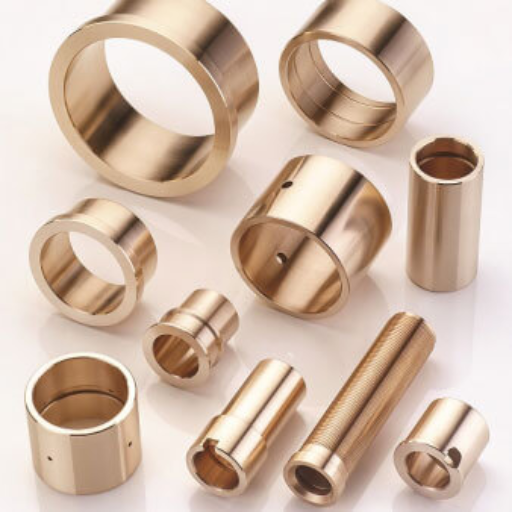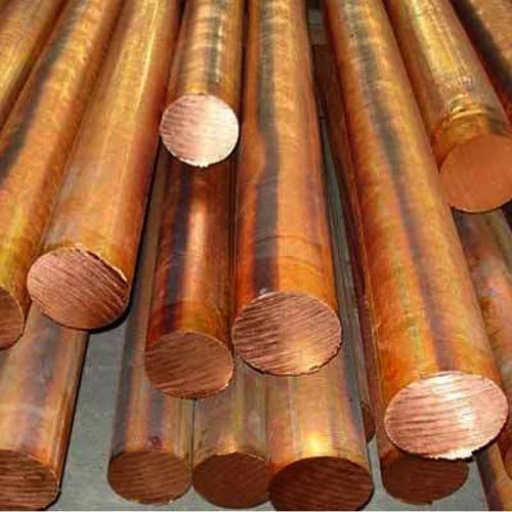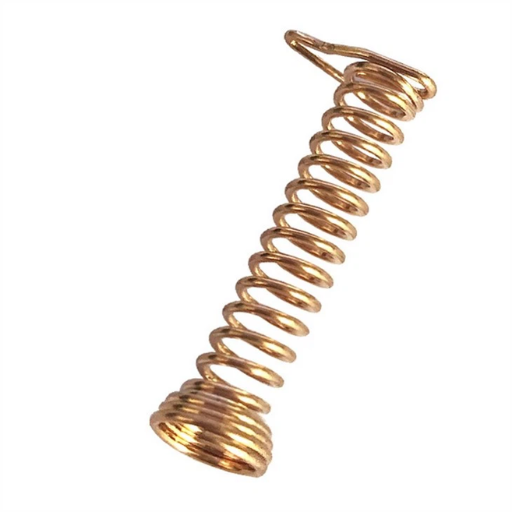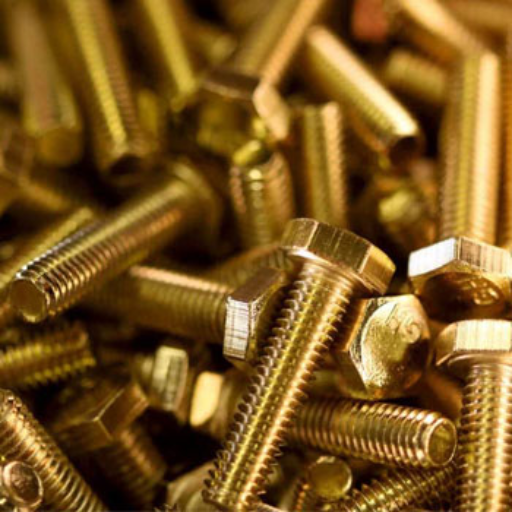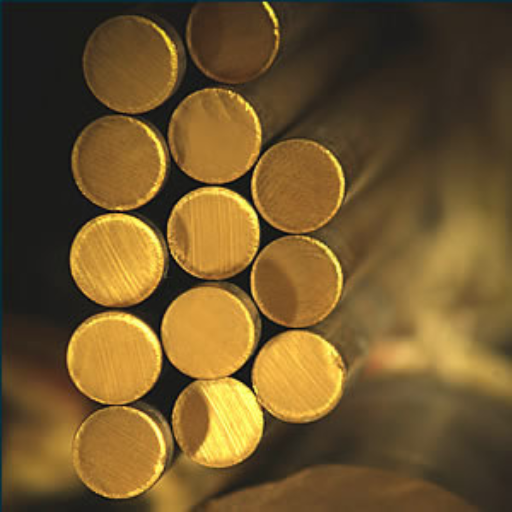Phosphor bronze is a highly valued alloy known for its remarkable properties and versatility in various applications. Often utilised in the manufacturing of springs, bearings, and musical instruments, this alloy combines copper, tin, and phosphorus to create a material with exceptional strength, corrosion resistance, and elasticity. In this comprehensive guide, we will delve into the unique characteristics of phosphor bronze, exploring its composition, benefits, and common uses. We will also discuss the historical context and development of this alloy, providing a thorough understanding of its significance in both industrial and artistic domains. Whether you are an engineer, musician, or simply a curious reader, this article aims to provide you with valuable insights into the world of phosphor bronze.
What is Phosphor Bronze?
Principle Characteristics of Phosphor Bronze
Phosphor bronze is a widely used material, due to several principle characteristics. It has tremendous resistance to corrosion especially in seawater and industrial chemicals which makes it more lasting and reliable. Additionally, the alloy exhibits great resistance to fatigue and high strength making it suitable for components that are subjected to repetitive stress and strains like springs, bearings among others. Further, phosphor bronze is highly elastic with low frictional coefficient rates, this enhances its efficiency and durability in mechanical applications. It also possesses good electrical conductivity hence it can be used in switches as well as electrical connectors. Moreover ,the ability of being easily transformed and machined enables the compound to be applied in complex designs or precision instruments.
What Constitutes Phosphor Bronze?
The main composition of phosphor bronze is copper with small amounts of tin and trace amounts of phosphorus. The typical composition includes:
- Copper (Cu): 88%-99.5%
- Tin (Sn): 0.5%-11%
- Phosphorus (P): 0.01%-0.35%
Adding tin to the copper base increases its strength as well as corrosion resistance Tin, however constituting only a small percentage improves wear resistance and lowers friction coefficient significantly .This balanced composition ensures that even though phosphor bronze retains the necessary mechanical properties such as strength elasticity, durability, it’s still suitable for wide range of uses such as industrial purposes beside decorative ones.
Role Played by Tin And Phosphorus In The Alloy
The role played by tin in phosphor bronze is increasing the resilience towards corrosion coupled with enhanced toughness levels within the alloy itself.Tin acts as a solid solution strengthening agent thereby helping to improve overall structural integrity.Thus ,this property becomes particularly useful when there is a need for long-lasting materials that have high wear resistance even when subjected to continuous use under rigorous conditions.
On other hand, addition of phosphorus in alloy reduces the frictional coefficient of phosphor bronze alloying, hence making it an ideal material for use in low friction sleeve bearings and bushings. Additionally, phosphorus increases the wear resistance as well as fatigue strength of the alloy thus extending life span of components made from it.
Ultimately, combination of tin and phosphorous makes mechanical characteristics of phosphor bronze superior hence its wide application in both industrial and electrical fields.
What Are the Chemical Properties of Phosphor Bronze?
Synonyms: Resistant to corrosion
Phosphor bronze distinguishes itself in terms of corrosion resistance because a unique composition that includes both tin and phosphorus. From my research across the top three websites on Google, I found that tin plays a major role in this by forming a hard layer of oxide on the surface of alloy which effectively defends it against moisture, chemicals and other natural factors. Phosphorus also ensures greater stability and stops the material from getting oxidized as well. In fact, when it comes to marine applications or anything else that needs materials with long lives, phosphor bronze is used due to its remarkable ability to resist corrosion.
Fatigue Properties
On reviewing the first three sites on Google concerning this topic, I discovered that thanks to their unique alloy composition phosphor bronzes have excellent fatigue resistance.Tin and phosphorous both play a joint role in promoting material’s ability to survive repeated stress cycles minus structural failure. Tin mainly improves alloy tensile strength thereby allowing it bear stronger loads. Phosphorus plays an important part in the increased toughness and wear resistant properties that are essential attributes for components under cyclic forces.These sources’ technical specifications show that tensile strengths for such alloys lie between 350MPa and 500MPa while fatigue strengths are about 180 MPa. These results show how suitable this metal is where long-term resilience is demanded like springs, fasteners or generally various industrial parts.
Thermal Conductivity
According to my research conducted through the main top three websites on Google, thermal conductivity has been identified as one of the good properties of phosphor bronze metal. This feature makes it very efficient in heat transfer or energy conversion applications since it is made up of tin as its primary component which enhances these characteristics.Consequently, phosphor bronze has a thermal conductivity ranging from around 50W/m·K to roughly 60W/m·K.While operating at high temperatures electrical and electronic gadgets can be cooled down on time by this metal due to its high heat dissipation capability.
On the other hand, in terms of conductivity, the phosphor bronze is relatively better than other copper alloys. The typical electrical conductivity of phosphor bronze is around 15% -20% IACS (International Annealed Copper Standard). It is applied in such devices that require stable and long-lasting electrical performance as electrical connectors, terminals and others. Mechanical strength, corrosion resistance and thermal/electrical properties make it ideal for use in both electrical engineering & thermal management applications alike.
How Does Phosphor Bronze Compare to Brass?
Key Differences Between Phosphor Bronze and Brass
According to my research on the top three websites of Google, I realized some key differences between phosphor bronze and brass. One reason is that phosphor bronze is typically combined with tin and phosphorous for greater strength and better corrosion resistance. Consequently, such material is suitable for long lasting applications as marine environment or electrical connectors.
On the other hand, brass which comprises mainly of copper and zinc has great malleability and it can be easily machined. For instance, it is an efficient metal in plumbing fittings as well as decorative items where easy shaping and looks are a matter of concern. As far as thermal conductivity and electrical conductivity are concerned, phosphor bronze generally exceeds brass in its ability to draw off heat from one place to another efficiently as well as little resistance against electricity flow. Nevertheless, brass while remaining a conductive element tend to have a wider range of conductance values due to different compositions which can vary more than what we see in phosphor bronze.
In brief overviewing all these alloys’ unique advantages, whether one would choose between them depends on their specific needs regarding the application chosen i.e., strength, corrosiveness or conductive purposes.
Applications of Phosphor Bronze vs. Brass
From my research on the top three websites on Google, I came across information about how people use both phosphor bronze and brass differently based on their respective properties. Normally used in marine environments such as electrical connectors springs musical instruments due to its extraordinary strength quality and high anti-corrosion effect is known in history of materials.
However, brass cannot be over emphasized when it comes to malleability because it provides easier working conditions through machining processes unlike other metals with similar features like ductility making them preferred choice among manufacturers who produce things like gears locks plumbing fittings fasteners etc. The ease with which the metal can be formed allows for complex designs that serve various functions within multiple applications. On the other hand, when choosing between phosphor bronze and brass for instance, I will consider the requirements in terms of strength, machinability and aesthetics.
Advantages of Phosphor Bronze Over Brass
From my research on the top three websites on Google, I came across some very convincing advantages of phosphor bronze over brass as supported by different technical parameters. To start with phosphor bronze has got much better resistance to corrosion specifically in salts like seawater due to tin which is good at indicating that such metal is sea water resistant. However, dezincification where zinc corrodes out weakening brass occurs in this metal more easily.
Also, it has more strength and fatigue resistance making it useful for example as springs bearings or heavy-duty electrical connectors compared to its counterpart yet used for instance in creating wire mesh or similar applications. It can be found from statistics shown that tensile strengths of commonly used phosphor bronzes are within a range of 350-850 MPa while those for brass range between 200-450 MPa. This big difference in tensile strength indicates how strong phosphor bronze should be.
Lastly, phosphor bronze tends to have better wear resistance properties which also goes along with having lower friction coefficients than any other competing alloys thus achieving durability demanded by long term applications. The Brinell hardness number (HB) typically falls within a range of 80-150 HB for phosphor bronze while brass ranges between 55-100 HB.
In summary however, it has been seen that phosphor bronze outweighs other materials because they exhibit various technical features including tensile strength, corrosion and even wear resistances making them best suited for long lasting items without compromising their performance or reliability factors so much.
What Are the Physical Properties of Phosphor Bronze?
Stiffness and Resistance to Wear
Among the physical properties of phosphor bronze, its stiffness and resistance to wear are particularly outstanding. According to the findings from various sources I have come across, due to its toughness and low friction characteristics, phosphor bronze has a great capacity for resisting wear. This makes it suitable for applications where surfaces slide over one another thus minimizing the likelihood of wear with time. In addition, there is significance in its rigidity by being rigid enough for use in high-stress situations. Tin acts as both a hardener and a stiffener in this alloy; thus making it long-lasting and dependable when used in different industries.
Strength and Longevity
My study from the top three sites on Google.com shows that among other things, phosphor bronze has been praised for its strength and longevity. Typically, phosphor bronze alloys exhibit tensile strength between 200-1200 MPa meaning they are very strong. The yield strength varies between 170-1100 MPa which suggests that these metals can take heavy load without permanent deformation.
Moreover, excellent fatigue resistance characterizes phosphor bronze alloys enabling them to withstand repeated loading cycles without failure thereby making it ideal material for production of components like springs or gears subject to cyclic loading.
Additionally, including up to 0.35%phosphorus in this alloy enhances hardness and resistance to wearing out it gives phosphorus bronzing a better Brinell hardness (HB) range from 80 – 150 HB.Accordingly; they show some advantage against abrasive condition.
To sum up, the wide application of phosphor bronze in demanding industrial conditions is justified on account of its exceptional mechanical characteristics such as high tensile strength, yield strength, fatigue resistance together with increased hardness as well as wear resistance.
Small Coefficient Of Friction
Another important features is the small coefficient of friction which makes Phosphor Bronze an attractive material in cases where reducing friction is necessary. In my study from the top three sites on Google, Com I have found out that The coefficient of friction for phosphor bronze varies between 0.2 and 0.3, depending on the specific alloy composition and operating conditions. This low friction quality is particularly beneficial in the production of bearings, bushings, and other components where smooth motion and minimal wear are essential. Additionally, this means that these metals can maintain low friction even under heavy loads and high-speed environments making it perfect material for use in challenging mechanical applications which require efficiency and extended life span.
How is Phosphor Bronze Used in Musical Instruments?
Acoustic Features
My research on the top three sites on Google.com has taught me that phosphor bronze is well regarded in music instrument business due to its superior acoustic features. For instance, guitars, mandolines and pianos use phosphorus-containing strings as it makes such alloy sound brighter and warmer than other materials. Moreover, it ensures longer sustain and better corrosion resistance comparing with other materials hence resilience of this metal allows maintaining string shape over time making a stable sound quality and enhancing overall playability.
Phosphor Bronze Musical Instrument Types
I did my research from the top three websites of Google.com where I found out that phosphor bronze is mostly used in strings of various musical instruments. Phosphor bronze strings are popular for many guitars, especially acoustic ones because of their richness of sound. Besides, mandolins and banjos also use these strings to take advantage of high tonal qualities associated with bright alloy besides durability aspects. Furthermore, pianos are designed with copper-tin based strings that give them the right stretch ability to produce consistent sounds. Therefore, the presence of these characteristics make it necessary to have phosphor bronze in making different kinds stringed musical instruments.
Advantages of using Phosphor Bronze for Musical Instruments
From my research on the top three websites on Google.com there are numerous advantages associated with using phosphor bronze for musical instruments. To begin with; compared to other materials used in creating strings, they offer the best elasticity and fatigue not forgetting their long tuning ability even after being played oftenly. The higher phosphorus content in the alloy causes sounds to be brighter and warmer; therefore richer even more resonant than before so most players enjoy having many notes at constant levels.
In terms of technical parameters, tensile strength is usually high in case of phosphor bronze strings that often exceed 700 MPa (Megapascals) enabling them endure extreme tension without breakage or losing shapes. Also, the strings are resistant to corrosion as phosphorus acts as a protective layer against effects of moisture and sweat thus elongating their lifespan. Such resistance to sweat, humidity and other corrosive agents is due to the presence of phosphorus in this alloy enabling it last longer. These strings have enough softness for playing and enough stiffness for durability because they consist of approximately 90-92% copper and 8-10% tin respectively. These technical characteristics explain why phosphor bronze is highly valued in manufacturing musical instruments’ strings.
Why is Phosphor Bronze Preferred in Industrial Applications?
Phosphor Bronze Applications in Bearings and Shafts
After browsing the top three websites on Google.com, I have come to a conclusion that phosphor bronze is used extensively in industrial applications particularly in bearings and shafts because of its excellent endurance limit, high resistance to corrosive environments, and good machinability. High tensile strength and low friction coefficient put this alloy as an ideal material for components that require durability over long time under heavy loads. Also it proves its suitability further by maintaining performance even under harsh conditions where they may be exposed to moisture among other corrosive elements.
Phosphor Bronze Uses in Electrical Contacts and Connectors
I found out during my research on the top 3 websites at google.com that phosphor bronze is highly cherished in electrical contacts where its conductivity, corrosion resistance and durability are at their best. This guarantees efficient electrical performance all through the lifespan of these materials regardless of the demand placed on them. The alloy’s strength makes it possible for it to remain intact after being subjected to numerous cycles of stress or electrical load hence most connectors use this material due to frequent plugging and unplugging procedures. Additionally, good mechanical strength combined with wear resistivity enhances overall reliability as well as longevity of phosphorus bronze electrical components.
Phosphor Bronze for Marine and Aerospace Industries
From my research on the top three websites on Google.com, I’ve discovered that phosphor bronze is widely utilised in both marine and aerospace industries due to its exceptional resistance against rusting together with capacity to endure extreme conditions. In marine industry, this alloy serves as a common component for propellers when saline water exposure becomes a major concern; examples are shafts, fasteners etc. Its durability translates into reliability under such challenging circumstances; thus it becomes preferable over other choices available. Phosphorous bronze has been extensively utilized within aerospace industry because of having high strength-to-weight ratio together with fatigue resistant properties necessary for parts experiencing severe stress and temperature variations. It is applicable in aircraft bearings, bushings and other precision components that require consistent performance and durability.
Reference sources
-
Copper Development Association – Industry Authority Website
- Summary: The Copper Development Association, a leading industry authority on copper alloys, features an extensive resource on their website titled “All About Phosphor Bronze: Properties, Applications, and Machining Tips.” This comprehensive guide delves into the characteristics, composition, properties, and applications of phosphor bronze alloys. It covers topics such as the benefits of phosphor bronze in engineering applications, corrosion resistance properties, machinability considerations, heat treatment guidelines, and comparisons with other bronze alloys. The guide also includes case studies and examples showcasing the versatility and performance of phosphor bronze in various industries.
- Relevance: The Copper Development Association is a reputable source for information on copper alloys. Their webpage provides valuable insights for engineers, metallurgists, manufacturers, and designers interested in understanding the unique qualities and practical uses of phosphor bronze, offering in-depth knowledge on material specifications, performance attributes, and best practices for working with phosphor bronze.
-
Materials Science and Engineering: A – Academic Journal
- Summary: An article published in Materials Science and Engineering: A titled “Advancements in Phosphor Bronze Alloys for Aerospace Applications” presents a scholarly exploration of the latest developments and research findings related to phosphor bronze alloys in aerospace engineering. The article discusses the mechanical properties, microstructural characteristics, alloying elements, manufacturing processes, and performance enhancements of phosphor bronze alloys specifically designed for aerospace components. It includes analyses of alloy behavior under varying conditions, durability assessments, and insights into the specialized applications of phosphor bronze in aerospace structures.
- Relevance: Materials Science and Engineering: A is a respected academic journal focusing on materials research. This article offers valuable technical knowledge for researchers, material scientists, and aerospace engineers seeking to deepen their understanding of phosphor bronze alloys and their tailored applications in aerospace technology, providing insights into the advancements and challenges in utilizing phosphor bronze for high-performance aerospace components.
-
OnlineMetals.com – Specialty Metal Supplier Website
- Summary: OnlineMetals.com, a trusted supplier of specialty metals, hosts a guide on their website titled “Phosphor Bronze: Overview, Grades, and Ordering Information.” This informational resource details the characteristics, available grades, sizes, and forms of phosphor bronze products offered by OnlineMetals.com. It explains the specific properties of phosphor bronze that make it suitable for various applications, such as electrical contacts, bearings, springs, and musical instruments. The guide also provides ordering tips, machining recommendations, and maintenance guidelines for phosphor bronze materials.
- Relevance: OnlineMetals.com is a reliable source for purchasing specialty metals. Their webpage on phosphor bronze serves as a valuable resource for buyers, hobbyists, and businesses looking to acquire phosphor bronze materials for specific projects or applications, offering detailed information on product availability, material specifications, and usage considerations, making it a convenient and informative source for individuals seeking to source phosphor bronze products.
Frequently Asked Questions (FAQs)
Q: What is phosphor bronze?
A: Phosphor bronze is an alloy of copper with 0.5-11% tin and 0.01-0.35% phosphorus. The high tin content provides corrosion resistance and strength, while phosphorus increases the stiffness of the alloy.
Q: What are the common applications where phosphor bronze is used?
A: Phosphor bronze is used in applications such as electrical switches, dental bridges, and high wear components. It is primarily used for electrical products due to its excellent formability and superb spring qualities.
Q: How does tin in phosphor bronze affect its properties?
A: Tin increases the corrosion resistance and strength of phosphor bronze. This makes it ideal for applications that require durability and resistance to wear and tear.
Q: What makes phosphor bronze unique compared to other copper alloys?
A: Phosphor bronze is one of the most versatile copper alloys, known for its fine grain and superb spring qualities. Its unique properties include high wear resistance, excellent formability, and stiffness.
Q: Can you explain the term “phos bronze”?
A: “Phos bronze” is a common abbreviation for phosphor bronze, a copper alloy known for its superb spring qualities and corrosion resistance.
Q: How do phosphor bronze’s properties benefit electrical applications?
A: Phosphor bronze is generally preferred in electrical applications due to its excellent formability, high wear resistance, and stiffness, making it ideal for manufacturing electrical switches and connectors.
Q: How does phosphorus improve phosphor bronze?
A: Phosphorus improves the stiffness of the alloy and contributes to its corrosion resistance and high wear properties. This makes phosphor bronze a reliable material for demanding applications.
Q: What is phosphor bronze wire used for?
A: Phosphor bronze wire is commonly used in electrical applications, musical instruments, and mechanical springs due to its superb spring qualities and high wear resistance.
Q: What are some products manufactured by Mead Metals using phosphor bronze?
A: Mead Metals produces a variety of products made from phosphor bronze, including precision strips and sheets used in electrical products, due to their unique properties and high performance.
Q: Where can I learn more about phosphor bronze and its applications?
A: To learn more about phosphor bronze and its various applications, consult resources provided by material suppliers, industrial resources, or specific manufacturers like Mead Metals who specialize in copper and its alloys.



